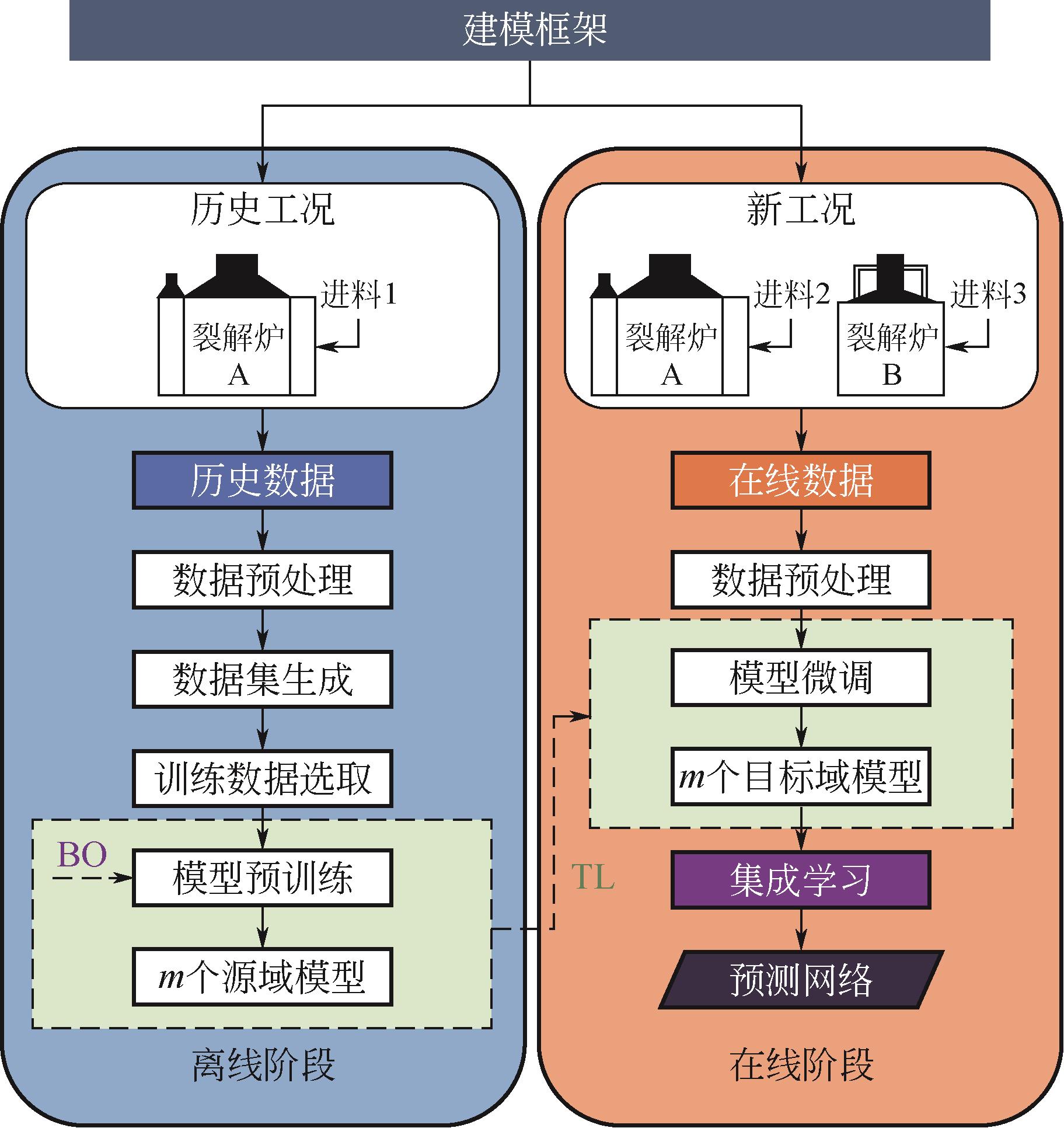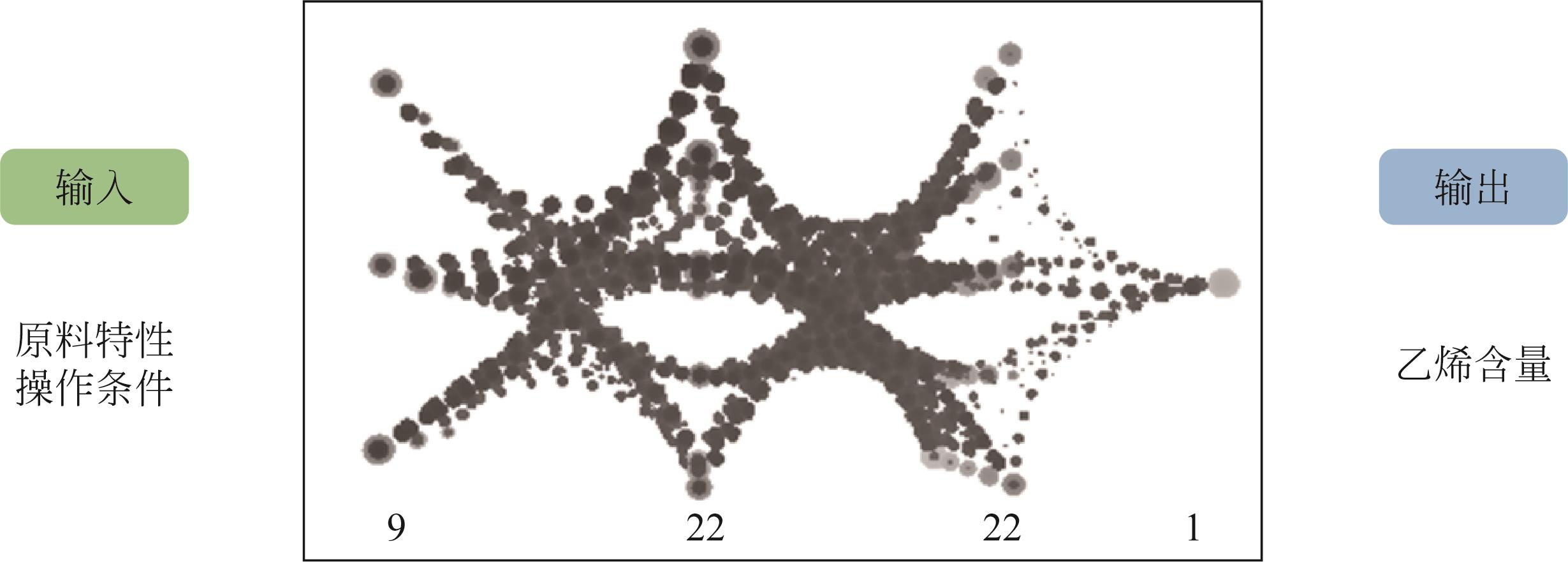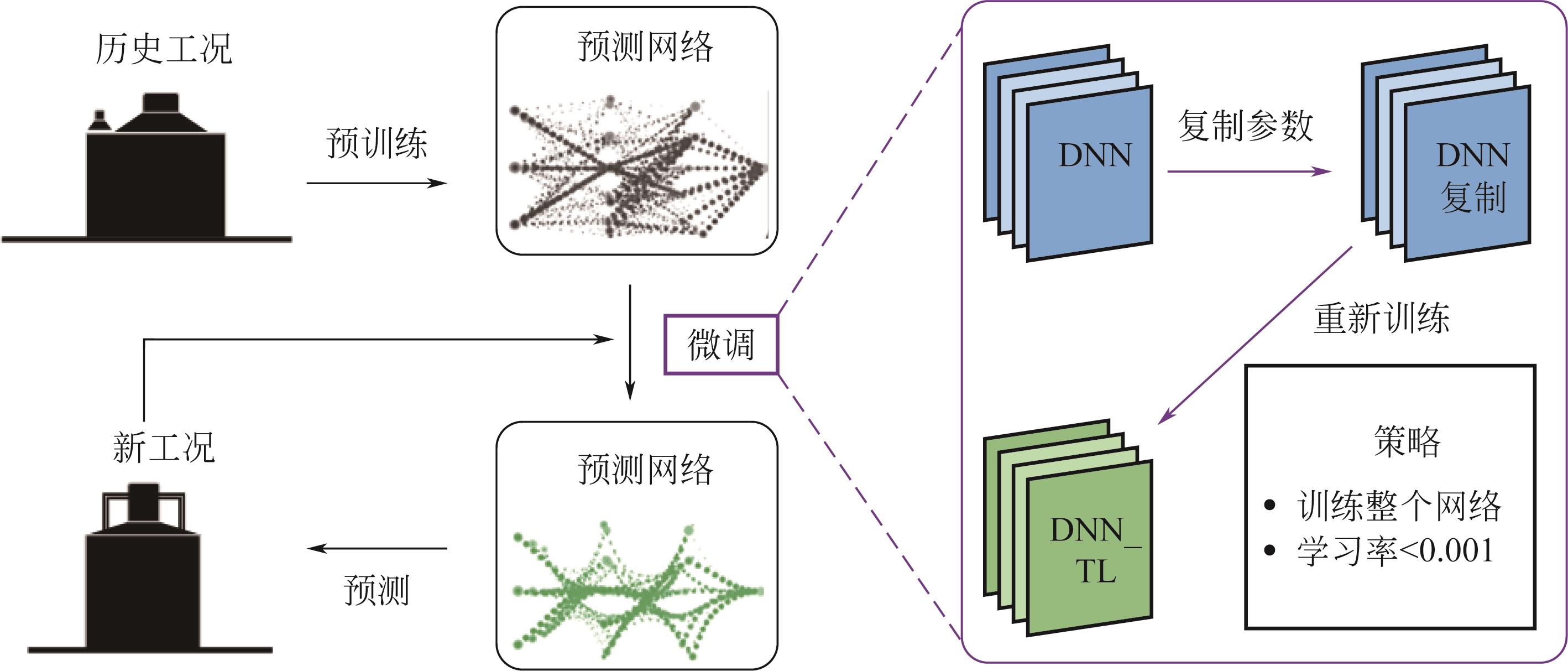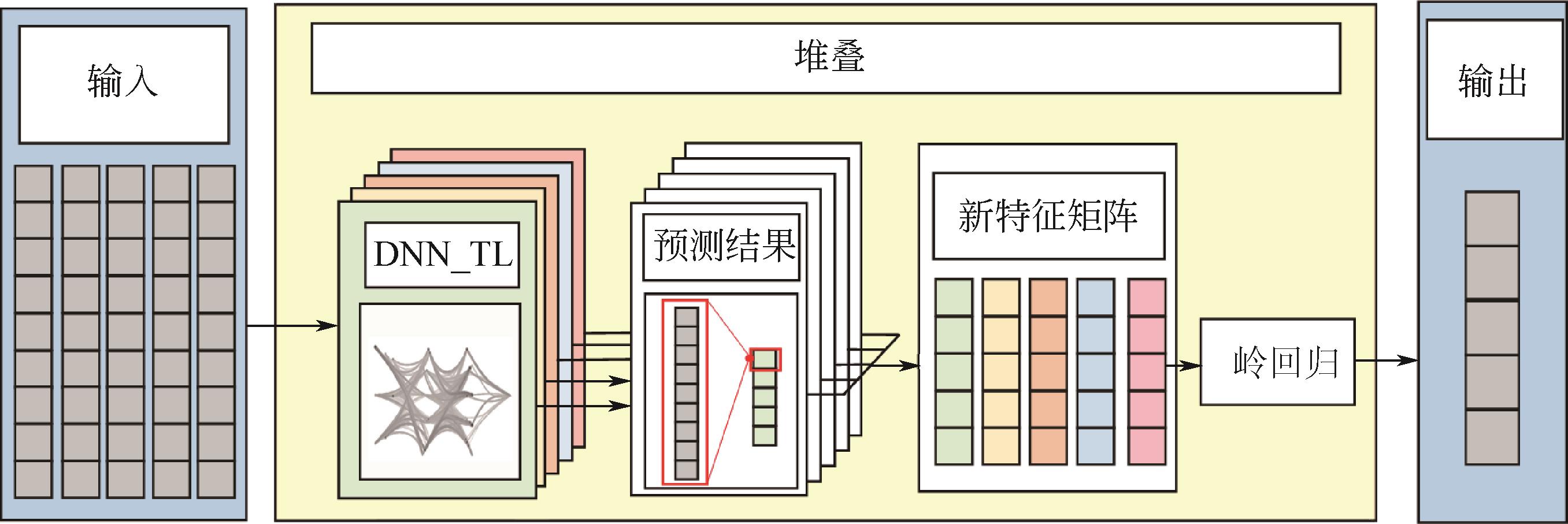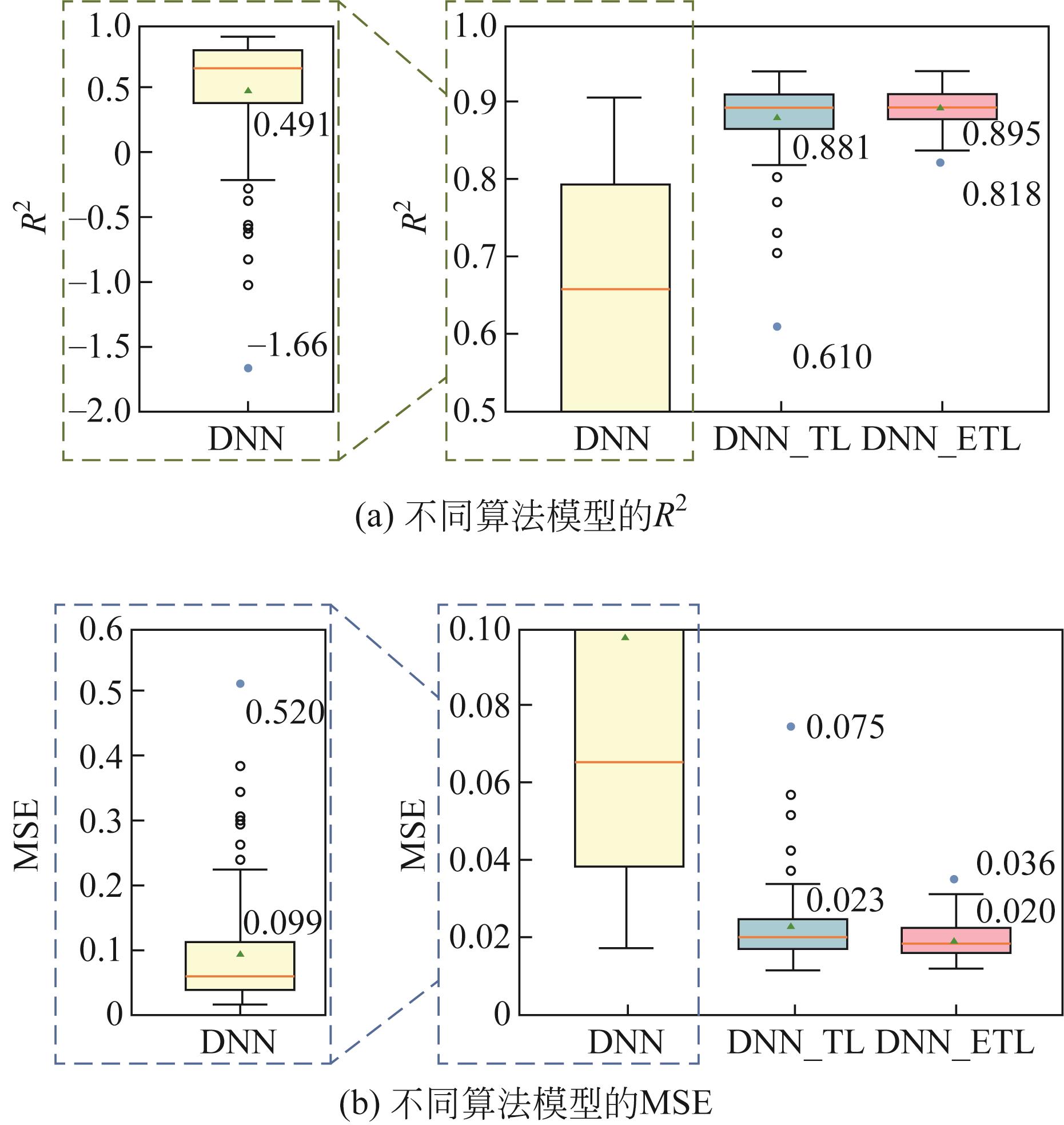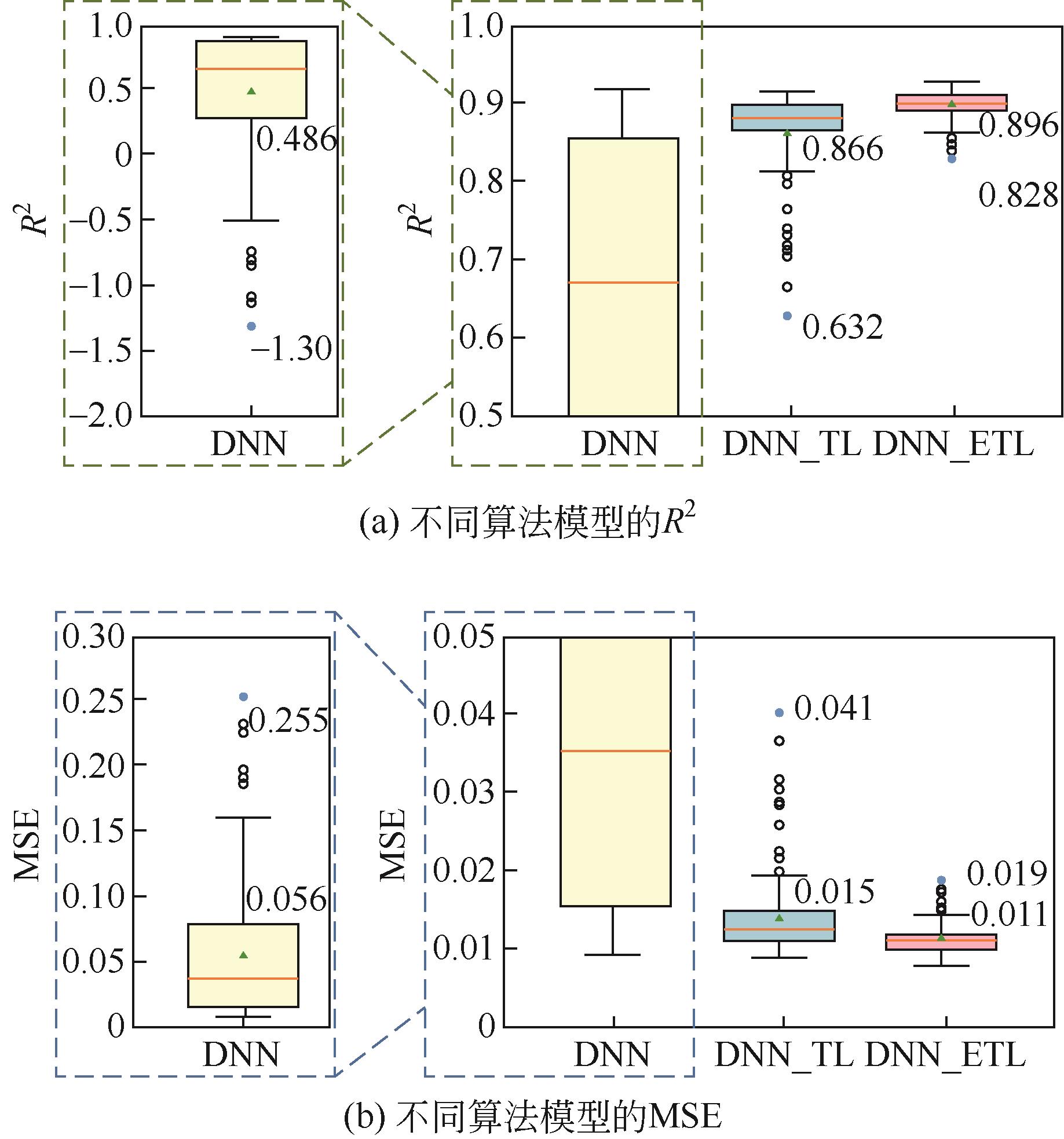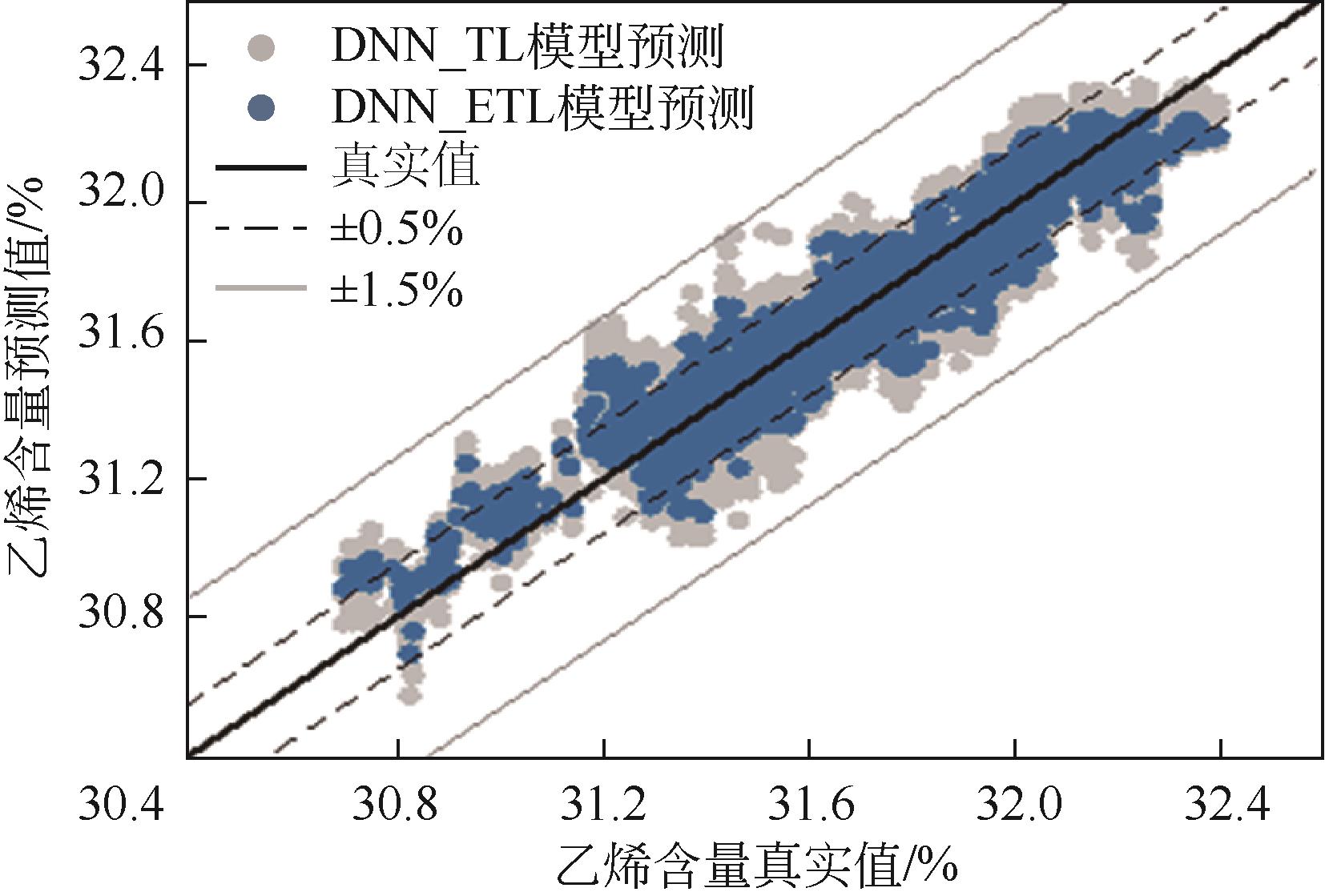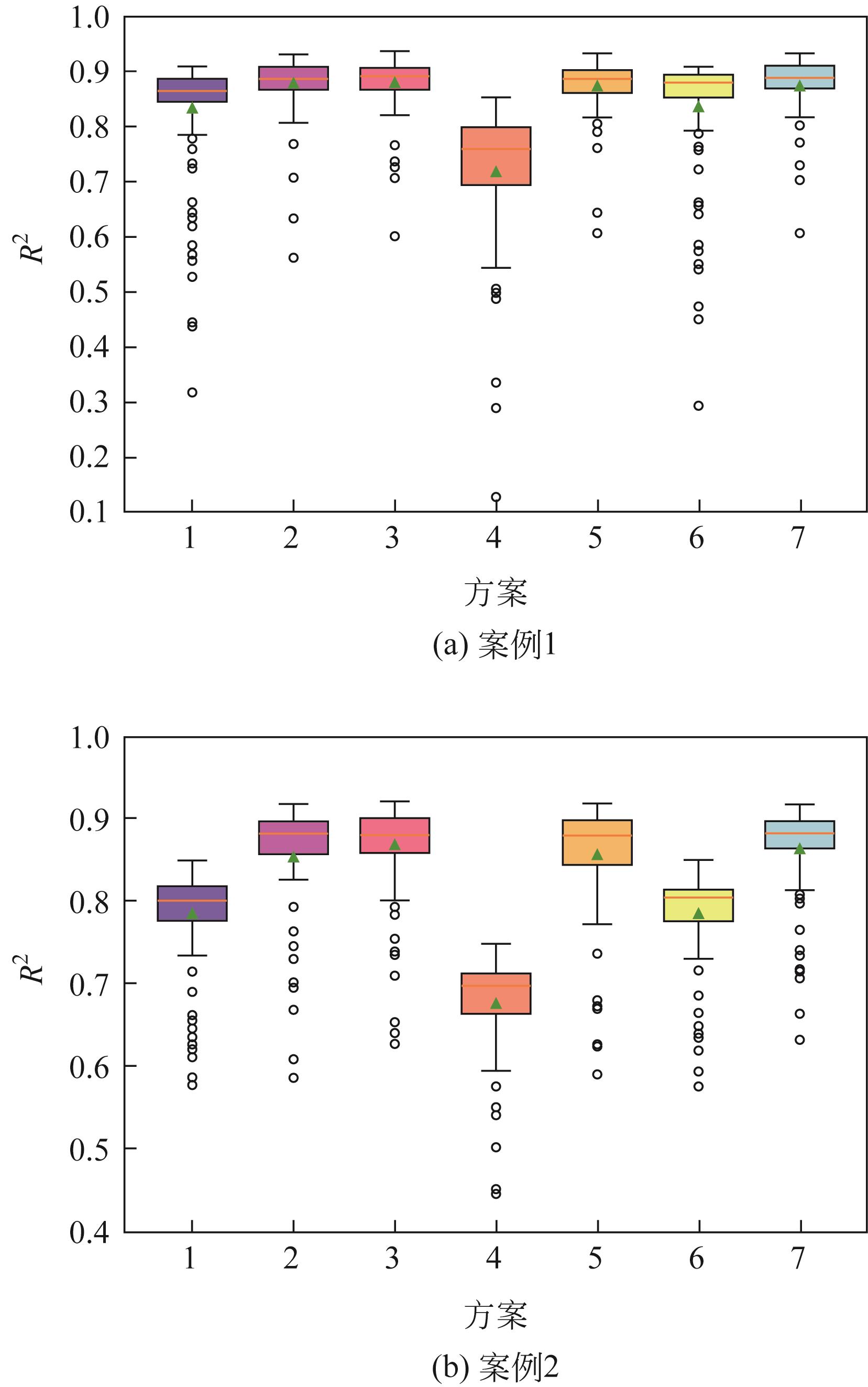| 1 |
Tomáš HÁK, Svatava JANOUŠKOVÁ, MOLDAN Bedřich. Sustainable development goals: A need for relevant indicators[J]. Ecological Indicators, 2016, 60: 565-573.
|
| 2 |
HUANG Mengtian, ZHAI Panmao. Achieving Paris Agreement temperature goals requires carbon neutrality by middle century with far-reaching transitions in the whole society[J]. Advances in Climate Change Research, 2021, 12(2): 281-286.
|
| 3 |
LIN Xinwei, ZHAO Liang, DU Wenli, et al. Data-driven modeling and cyclic scheduling for ethylene cracking furnace system with inventory constraints[J]. Industrial & Engineering Chemistry Research, 2021, 60(9): 3687-3698.
|
| 4 |
GHOLAMI Zahra, GHOLAMI Fatemeh, Zdeněk TIŠLER, et al. A review on the production of light olefins using steam cracking of hydrocarbons[J]. Energies, 2021, 14(23): 8190.
|
| 5 |
HAN Yongming, ZHOU Rundong, GENG Zhiqiang, et al. A novel data envelopment analysis cross-model integrating interpretative structural model and analytic hierarchy process for energy efficiency evaluation and optimization modeling: Application to ethylene industries[J]. Journal of Cleaner Production, 2020, 246: 118965.
|
| 6 |
Shanmuga PRIYA S, CUCE Erdem, SUDHAKAR K. A perspective of COVID 19 impact on global economy, energy and environment[J]. International Journal of Sustainable Engineering, 2021, 14(6): 1290-1305.
|
| 7 |
NOROUZI Nima. Post-COVID-19 and globalization of oil and natural gas trade: Challenges, opportunities, lessons, regulations, and strategies[J]. International Journal of Energy Research, 2021, 45(10): 14338-14356.
|
| 8 |
FAKHROLESLAM Mohammad, SADRAMELI Seyed Mojtaba. Thermal/catalytic cracking of hydrocarbons for the production of olefins; A state-of-the-art review Ⅲ: Process modeling and simulation[J]. Fuel, 2019, 252: 553-566.
|
| 9 |
HU Guihua, WANG Honggang, QIAN F, et al. Coupled simulation of an industrial naphtha cracking furnace equipped with long-flame and radiation burners[J]. Computers & Chemical Engineering, 2012, 38: 24-34.
|
| 10 |
REN Yu, GUO Gaoshun, LIAO Zuwei, et al. Kinetic modeling with automatic reaction network generator, an application to naphtha steam cracking[J]. Energy, 2020, 207: 118204.
|
| 11 |
DENTE M, RANZI E, GOOSSENS A G. Detailed prediction of olefin yields from hydrocarbon pyrolysis through a fundamental simulation model (SPYRO)[J]. Computers & Chemical Engineering, 1979, 3(1/2/3/4): 61-75.
|
| 12 |
CLYMANS P J, FROMENT G F. Computer-generation of reaction paths and rate equations in the thermal cracking of normal and branched paraffins[J]. Computers & Chemical Engineering, 1984, 8(2): 137-142.
|
| 13 |
VAN GEEM K M, REYNIERS M F, MARIN G B. Challenges of modeling steam cracking of heavy feedstocks[J]. Oil & Gas Science and Technology: Revue De L’IFP, 2008, 63(1): 79-94.
|
| 14 |
WU Hao, HAN Yongming, GENG Zhiqiang, et al. Production capacity assessment and carbon reduction of industrial processes based on novel radial basis function integrating multi-dimensional scaling[J]. Sustainable Energy Technologies and Assessments, 2022, 49: 101734.
|
| 15 |
REN Yu, LIAO Zuwei, YANG Yao, et al. Direct prediction of steam cracking products from naphtha bulk properties: Application of the two sub-networks ANN[J]. Frontiers in Chemical Engineering, 2022, 4: 983035.
|
| 16 |
SADRAMELI S M, GREEN A E S. Systematics and modeling representations of naphtha thermal cracking for olefin production[J]. Journal of Analytical and Applied Pyrolysis, 2005, 73(2): 305-313.
|
| 17 |
Natália OLAHOVÁ, SYMOENS Steffen H, DJOKIC Marko R, et al. CoatAlloy barrier coating for reduced coke formation in steam cracking reactors: Experimental validation and simulations[J]. Industrial & Engineering Chemistry Research, 2018, 57(3): 897-907.
|
| 18 |
SYMOENS Steffen H, OLAHOVA Natalia, MUÑOZ GANDARILLAS Andrés E, et al. State-of-the-art of coke formation during steam cracking: Anti-coking surface technologies[J]. Industrial & Engineering Chemistry Research, 2018, 57(48): 16117-16136.
|
| 19 |
MURATAEV F I, GALIMOV E R, GALIMOVA N YA. Substantiation of domestic material and welding technology for improving properties and competitiveness of pyrolysis furnace coils[J]. IOP Conference Series: Materials Science and Engineering, 2019, 570(1): 012071.
|
| 20 |
BAI Dehong, ZONG Yuan, ZHOU Minmin, et al. Novel cracking coil design based on positive constructing of synergetic flowing field[J]. International Journal of Heat and Mass Transfer, 2019, 129: 783-792.
|
| 21 |
TIJANI M E H, ZONDAG Herbert, VAN DELFT Yvonne. Review of electric cracking of hydrocarbons[J]. ACS Sustainable Chemistry & Engineering, 2022, 10(49): 16070-16089.
|
| 22 |
SADRAMELI S M, GREEN Alex E S. Systematics of renewable olefins from thermal cracking of canola oil[J]. Journal of Analytical and Applied Pyrolysis, 2007, 78(2): 445-451.
|
| 23 |
KARABA Adam, ROZHON Jakub, PATERA Jan, et al. Fischer‐Tropsch wax from renewable resources as an excellent feedstock for the steam-cracking process[J]. Chemical Engineering & Technology, 2021, 44(2): 329-338.
|
| 24 |
SUN Peiyong, LIU Sen, ZHOU Yupeng, et al. Production of renewable light olefins from fatty acid methyl esters by hydroprocessing and sequential steam cracking[J]. ACS Sustainable Chemistry & Engineering, 2018, 6(10): 13579-13587.
|
| 25 |
WANG Kai, ZHOU Wenxuan, LIU Chenliang, et al. A multi-source transfer learning method for new mode monitoring in industrial processes[C]//2022 8th International Conference on Control, Decision and Information Technologies (CoDIT). Istanbul, Turkey. IEEE, 2022: 124-129.
|
| 26 |
PANJAPORNPON Chanin, BARDEENIZ Santi, HUSSAIN Mohamed Azlan, et al. Energy efficiency and savings analysis with multirate sampling for petrochemical process using convolutional neural network-based transfer learning[J]. Energy and AI, 2023, 14: 100258.
|
| 27 |
GUO Jingjing, DU Wenli, NASCU Ioana. Adaptive modeling of fixed-bed reactors with multicycle and multimode characteristics based on transfer learning and just-in-time learning[J]. Industrial & Engineering Chemistry Research, 2020, 59(14): 6629-6637.
|
| 28 |
HUA Feng, FANG Zhou, QIU Tong. Application of convolutional neural networks to large-scale naphtha pyrolysis kinetic modeling[J]. Chinese Journal of Chemical Engineering, 2018, 26(12): 2562-2572.
|
| 29 |
LIU Yi, YANG Chao, ZHANG Mingtao, et al. Development of adversarial transfer learning soft sensor for multigrade processes[J]. Industrial & Engineering Chemistry Research, 2020, 59(37): 16330-16345.
|
| 30 |
CAI Haiyong, KRZYWICKI Andrzej, OBALLA Michael C. Coke formation in steam crackers for ethylene production[J]. Chemical Engineering and Processing: Process Intensification, 2002, 41(3): 199-214.
|
| 31 |
MOHAMADALIZADEH A, TOWFIGHI J, KARIMZADEH R. Modeling of catalytic coke formation in thermal cracking reactors[J]. Journal of Analytical and Applied Pyrolysis, 2008, 82(1): 134-139.
|
| 32 |
OLARENWAJU O F, OKONKWO P C, ADEREMI B O. Modelling and simulation of coking in the riser of an industrial fluid catalytic cracking (FCC) unit[J]. Nigerian Journal of Technology, 2015, 34(2): 301.
|
| 33 |
LU Peng, HUANG Qunxing, CHI Yong, et al. Coking and regeneration of nickel catalyst for the cracking of toluene As a tar model compound[J]. Energy & Fuels, 2017, 31(8): 8283-8290.
|
| 34 |
SADRAMELI S M. Thermal/catalytic cracking of hydrocarbons for the production of olefins: A state-of-the-art review I: Thermal cracking review[J]. Fuel, 2015, 140: 102-115.
|
| 35 |
ZHENG Shu, ZHANG Xiangyu, QI Chaobo, et al. Modeling of heat transfer and pyrolysis reactions in ethylene cracking furnace based on 3-D combustion monitoring[J]. International Journal of Thermal Sciences, 2015, 94: 28-36.
|
| 36 |
BIKMUKHAMETOV Timur, Johannes JÄSCHKE. Combining machine learning and process engineering physics towards enhanced accuracy and explainability of data-driven models[J]. Computers & Chemical Engineering, 2020, 138: 106834.
|
| 37 |
ZHAO Qiming, BI Kexin, QIU Tong. Data-driven intelligent modeling framework for the steam cracking process[J]. Chinese Journal of Chemical Engineering, 2023, 61: 237-247.
|
| 38 |
LIU Jichang, SHEN Benxian, WANG Daqi, et al. Separating group compositions in naphtha by adsorption and solvent extraction to improve olefin yields of steam cracking process[J]. Journal of Petroleum Science and Engineering, 2009, 66(3/4): 156-160.
|
| 39 |
RUDER S. An overview of gradient descent optimization algorithms[M/OL]. arXiv, 2017[2023-04-08]. .
|
| 40 |
SUN Shiliang, CAO Zehui, ZHU Han, et al. A survey of optimization methods from a machine learning perspective[J]. IEEE Transactions on Cybernetics, 2020, 50(8): 3668-3681.
|
| 41 |
DODGE J, ILHARCO G, SCHWARTZ R, et al. Fine-tuning pretrained language models: weight initializations, data orders, and early stopping[EB/OL].2020[2023-04-08]. .
|
| 42 |
BROCHU Eric, CORA Vlad M, DE FREITAS Nando. A tutorial on Bayesian optimization of expensive cost functions, with application to active user modeling and hierarchical reinforcement learning[J]. CoRR, 2010, abs/1012.2599.
|
| 43 |
PAN Sinno Jialin, YANG Qiang. A survey on transfer learning[J]. IEEE Transactions on Knowledge and Data Engineering, 2010, 22(10): 1345-1359.
|
| 44 |
JIANG Junguang, SHU Yang, WANG Jianmin, et al. Transferability in deep learning: A survey[EB/OL]. 2022[2023-04-06]. .
|
| 45 |
WOLPERT David H. Stacked generalization[J]. Neural Networks, 1992, 5(2): 241-259.
|
| 46 |
HARTIGAN J A, WONG M A. Algorithm AS 136: A K-means clustering algorithm[J]. Applied Statistics, 1979, 28(1): 100.
|
| 47 |
YOSINSKI Jason, CLUNE Jeff, BENGIO Yoshua, et al. How transferable are features in deep neural networks?[J]. Advances in Neural Information Processing Systems, 2014, 4(January): 3320-3328.
|
| 48 |
LUNDBERG Scott M, LEE Su-In. A unified approach to interpreting model predictions[C]//Proceedings of the 31st International Conference on Neural Information Processing Systems, December 2017: 4768–4777.
|
| 49 |
LUNDBERG S M, ERION G G, LEE S I. Consistent individualized feature attribution for tree ensembles[EB/OL]. 2019[2023-04-08]. .
|
 ), JIANG Yuxin2, BI Kexin1(
), JIANG Yuxin2, BI Kexin1( ), ZHAO Qiming3, CHEN Shaochen1, WANG Bingbing1, REN Junyu1, JI Xu1, QIU Tong3, DAI Yiyang1
), ZHAO Qiming3, CHEN Shaochen1, WANG Bingbing1, REN Junyu1, JI Xu1, QIU Tong3, DAI Yiyang1
 ), 江雨欣2, 毕可鑫1(
), 江雨欣2, 毕可鑫1( ), 赵祺铭3, 陈少臣1, 王冰冰1, 任俊宇1, 吉旭1, 邱彤3, 戴一阳1
), 赵祺铭3, 陈少臣1, 王冰冰1, 任俊宇1, 吉旭1, 邱彤3, 戴一阳1
